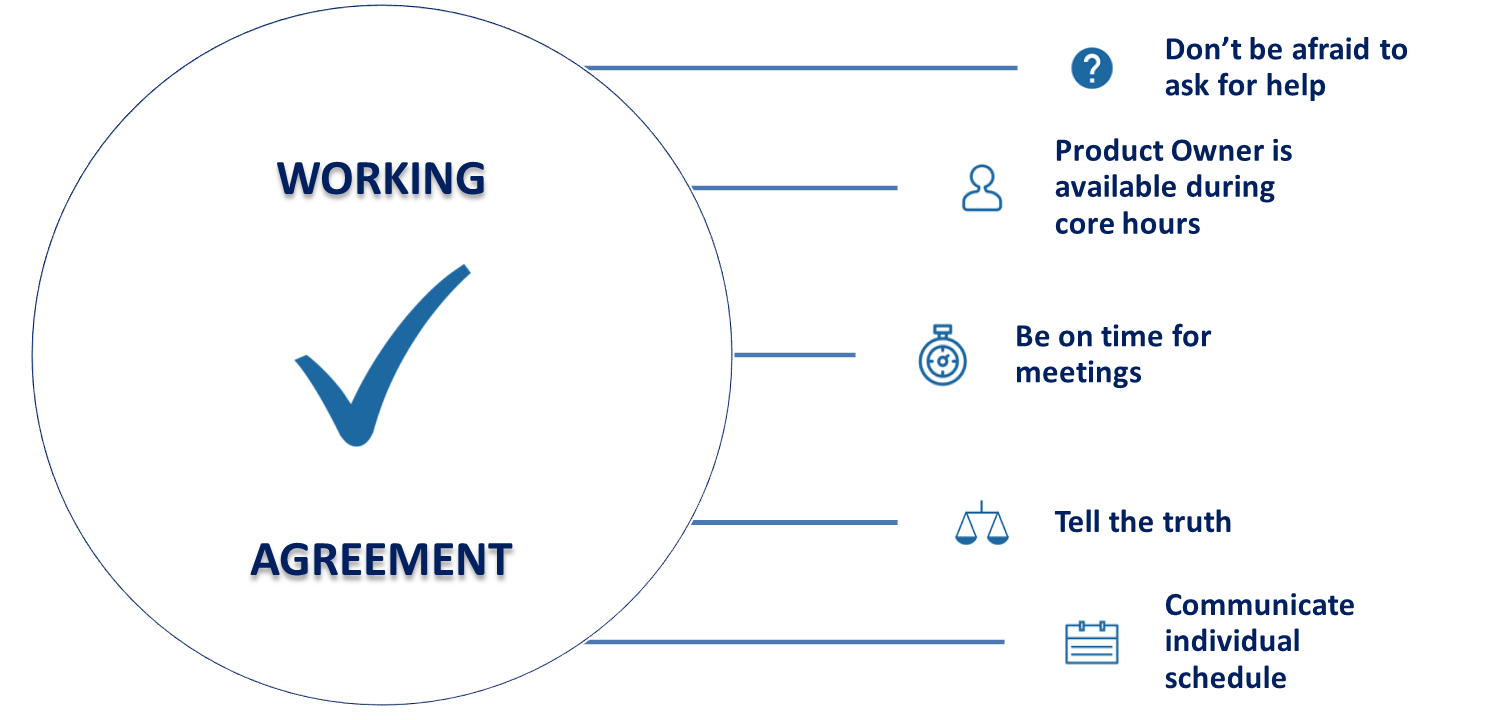Establishing an Agile Team Working Agreement
Forming an Agile Team
When forming a new Agile team, particularly one implementing a Scrum or Kanban approach, we know that it will take some time to develop their optimal productivity flow. In Tuckman’s stages of group development, a team must adapt through several phases as they “find their groove:”

In the Forming phase of an Agile Team, they must set the foundation for building trust, facilitating open communication, and defining their working disciplines that will guide self-organization throughout additional phases. These working disciplines, or “ground rules,” are the Team’s agreement as to how they will interact with one another and plan, set, and achieve common goals.
Defining Team Disciplines
The purpose of the working agreement is to ensure the Agile Team shares responsibility in defining expectations for how they will function together and enhance their self-organization process. It creates an awareness of both positive (and negative) behaviors that can impact the Team and empowers the Scrum Master to keep them accountable.
The process of defining the Team’s working agreement is straightforward. The Scrum Master facilitates a session with the Agile Team and Product Owner, where they generate a number of team disciplines together. A working agreement should be recalled easily, so they will then vote on the top five to ten disciplines. Once the Team has agreed upon a set of disciplines, they should be posted in their designated area and/or stored in a virtual folder that is accessible to all members.
Examples of Team Disciplines
Here are some examples of Agile Team disciplines included in a working agreement:

Source: AgileFAQ, Getting Agile
Other examples:
- ALL changes to the Sprint / Backlog must be approved by the Product Owner
- Use the Impediment Backlog (or swimlane) for blocked issues
- Define and adhere to ‘DONE’ criteria for stories
- Define and adhere to Version Control rules
- Adhere to code documentation standards
- Update Backlog before Standup daily
- Respect your team member’s time
Maintaining Team Disciplines
Success of the working agreement is based on the Team’s commitment to their established disciplines, so it is essential that they are agreed upon by the entire Agile Team. As they continue through the stages of group development, the Team will begin to hold themselves and each other accountable.
The working agreement should be reviewed periodically, especially when the Team experiences change (i.e. new member joins or leaves the Team) or a member breaks one of the ground rules. Retrospective meetings can provide a vehicle for regular review, so as the Team reflects on their processes, they can also identify lacking or problematic disciplines in their working agreement. If team members find that a specific discipline is consistently broken, they should examine whether it is a reasonable expectation or whether it should be removed due to influences or variables outside the team’s control (e.g. team members are not 100% dedicated so they are unable to consistently meet their ‘DONE’ criteria for stories).
Good Reads
These are good references for understanding Agile Team Working Agreements:

